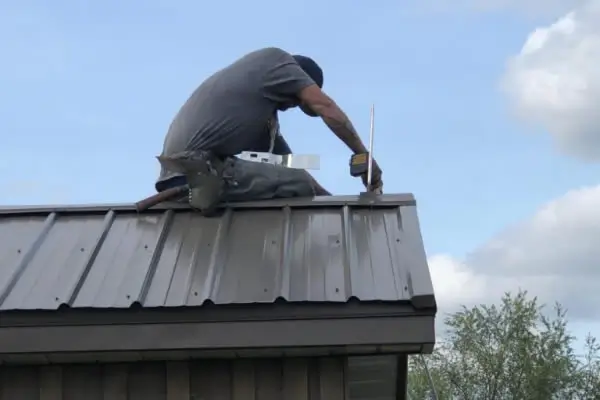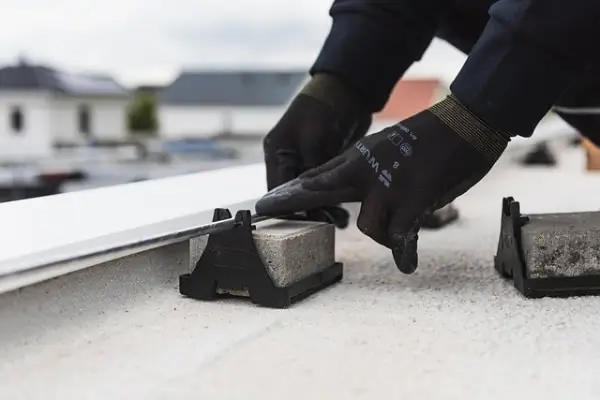Call 225-406-0295 for Lightning Protection Solutions
Call us today or fill out our form for a free estimate for lightning protection services
Contact us 24/7 for professional Lightning Protection Systems. We proudly serve clients nationwide, with a strong focus on Louisiana, Florida, Texas, the Delta Region, Arkansas, and surrounding areas. We offer reliable service, affordable pricing, and the best lightning protection available.
Common Types of Lightning Rod Repairs: Ensuring Reliable Protection
Keep Your Home, Barn, or Business Safe with Strike Safe Lightning
Lightning strikes can be sudden, powerful, and unpredictable. A properly installed lightning rod system protects your property by directing electrical energy safely into the ground, preventing structural damage, fire, and injury. However, like any protective system, lightning rods require regular maintenance and timely repairs to remain effective. Neglecting repairs can leave your home, barn, commercial building, or agricultural property vulnerable when a storm hits.
At Strike Safe Lightning, we specialize in lightning protection system installation, inspection, and repair throughout Louisiana, Gulfport MS, Mobile AL, and the Gulf Coast region. Understanding the common types of lightning rod repairs can help property owners ensure continuous, reliable protection.
Safe Strike Lightning Protection provides a full range of lightning protection services through out Louisiana, Florida, Texas, Arkansas, Delta Region and beyond. Some of our services include:
- Risk Assessment
- Lightning Protection System Design
- Lightning Protection System Installation
- Test & Inspections of Lightning Protection Systems
- Lightning Protection System Maintenance & Repair
- Retrofit of Existing Lightning Rods
-
Damaged or Missing Lightning Rods
The most visible part of a lightning protection system is the lightning rod (air terminal), typically installed on rooftops, cupolas, or tall structures. Over time, rods can become bent, corroded, or even detached due to:
- Severe storms with strong winds
- Hail or debris impact
- Poor installation or aging materials
A missing or damaged lightning rod compromises the system’s ability to intercept lightning strikes, leaving your building vulnerable. Repair typically involves replacing the damaged rod, ensuring proper grounding, and verifying that the new rod integrates seamlessly with the existing system.
-
Corroded or Broken Conductors
Conductors are the copper or aluminum cables that safely carry the lightning strike’s electrical energy from the air terminals to the grounding electrodes. Over time, conductors can suffer from:
- Corrosion caused by exposure to rain, humidity, and coastal salt air
- Physical damage from falling tree limbs, foot traffic, or maintenance activities
- Loose connections at joints or clamps
A compromised conductor reduces the efficiency of the system and increases the risk of a side flash, which can damage your property. Repairs may include replacing damaged cable sections, cleaning and re-bonding connections, and securing loose cables to restore full functionality.
-
Grounding System Issues
The grounding system is the backbone of any lightning protection system. It disperses electrical energy safely into the earth. Common grounding issues include:
- Corrosion of ground rods or plates due to soil composition and moisture
- Loose connections at grounding electrodes
- Shifting or settling soil that affects rod depth or orientation
A faulty grounding system can render the entire lightning protection system ineffective. Repairs usually involve replacing corroded rods, tightening connections, and ensuring rods meet the required depth and spacing according to NFPA and UL standards.
-
Bonding and Connection Failures
Lightning protection systems often require bonding between metal components such as roof flashing, chimneys, and HVAC units to prevent side flashes. Over time, bonding connections can loosen or corrode, especially in coastal regions like Louisiana and the Gulf Coast.
Signs of bonding failures include:
- Loose or disconnected clamps
- Visible corrosion on bonded metal surfaces
- Discoloration or burn marks near bonding points
Repairs involve re-bonding the metal components with corrosion-resistant clamps and ensuring all joints meet NFPA-compliant standards. Proper bonding prevents stray electrical paths and protects your property during a lightning strike.
-
Structural or Roof Damage Impacting Lightning Rods
Sometimes, lightning rod repairs are needed not because of the rod itself, but due to roofing or structural issues. Examples include:
- Roof leaks around rod mounts
- Shifting shingles or tiles affecting rod placement
- Structural weakening of cupolas or towers
In these cases, coordinated repair between roofing contractors and lightning protection specialists ensures both the building’s integrity and the lightning protection system’s effectiveness.
-
Routine Inspections and Preventative Maintenance
Not all lightning rod “repairs” are due to visible damage. Routine inspections can identify potential issues before a strike occurs, such as:
- Corrosion at joints or rods
- Loose conductor connections
- Degraded grounding components
Preventative maintenance reduces emergency repair costs, extends system life, and ensures compliance with NFPA 780 and UL 96 standards. At Strike Safe Lightning, we recommend annual inspections, especially in high-risk areas like coastal Louisiana and the Gulf Coast.
Why Timely Lightning Rod Repairs Matter
Ignoring damaged components or deferred repairs can have serious consequences:
- Increased risk of structural fires in homes, barns, or commercial buildings
- Damage to electrical systems, appliances, and equipment
- Harm to livestock or pets in agricultural settings
- Voided insurance coverage for lightning-related claims
Repairing and maintaining lightning protection systems ensures peace of mind and reliable protection for your property, family, and animals


Schedule a Lightning Protection Inspection Today
Don’t wait until the next storm exposes vulnerabilities in your system. Contact Strike Safe Lightning today to schedule a full lightning protection inspection or repair estimate. Our experts will identify issues, perform repairs, and restore your system to peak performance.
📍 Serving Louisiana, Mississippi, Alabama, Arkansas, and the Gulf Coast region.
Protect your home. Protect your barn. Protect your business. Protect your livelihood.
With Strike Safe Lightning, you can rest easy knowing your property is shielded from lightning strikes.
📞 Request a Free Lightning Protection Estimate Today
Don’t wait for lightning to strike — protect your home or business now with a professionally installed Lightning Rod System from Strike Safe Lightning Protection.


Our Lightning Protection Services
Risk Assessment – Before installing a lightning protection system on your property, our experts perform a full risk assessment to identify vulnerabilities and ensure the best protection plan.
Custom Lightning Protection System Design – Every property is unique in size, shape, and structure. We create a customized lightning protection system design that complies with NFPA and industry standards.
Professional Lightning Protection Installation – Our team installs lightning protection systems that are fully compliant with all codes of practice, ensuring maximum safety for your home, farm, barn, or business.
Retrofit of Existing Lightning Rods – Already have lightning rods in place? We can retrofit and upgrade your existing system to improve efficiency, meet the latest safety standards, and provide stronger protection for your property.
Grounding Services – A proper grounding system is critical for effective lightning protection. We install and maintain grounding systems that safely disperse electrical energy into the earth, protecting your structures, equipment, and livestock.
Testing & Inspection of Lightning Protection Systems – We provide annual testing and inspection services to keep your existing lightning protection system operating safely and efficiently.
Lightning Protection System Maintenance & Repair – Over time, harsh weather and aging equipment can affect performance. We offer complete maintenance and repair services to keep your lightning protection system in top condition.
Frequently Asked Questions About Lightning Rods
- Do lightning rods really protect homes from lightning strikes?
Yes. A properly installed lightning rod system doesn’t prevent lightning, but it provides a safe, controlled path for the electrical energy to travel into the ground. This helps prevent fires, roof damage, and electrical surges that can destroy appliances or wiring — a critical safeguard in storm-prone regions like Louisiana, Texas, Florida, Delta and Gulf Coast Regions. - Will lightning rods change the look of my home or building?
Not at all. Today’s lightning protection systems can be designed to be ornamental or completely hidden. Our technicians can conceal conductors under roofing materials or behind walls, and use decorative air terminals that match your property’s style — ideal for historic buildings, modern homes, and commercial structures. - How long does a lightning protection system last?
A quality lightning rod and grounding system, when professionally installed and maintained, can last for decades. Copper and aluminum components are highly durable and resistant to corrosion, especially when installed according to UL and NFPA standards. Regular inspections by a certified contractor, like Strike Safe Lightning Protection, ensure long-term reliability. - Why should I hire a professional lightning protection installer?
Lightning protection requires precise engineering and grounding design. A professional installer ensures that all rods, conductors, and ground connections meet strict safety standards. Improper installation can actually increase the risk of damage. With Strike Safe Lightning Protection, homeowners and businesses across Louisiana, Arkansas, and the Delta region can trust that every system is custom-built, UL-listed, and code-compliant for maximum protection.
Call 225-406-0295 for Lightning Protection Solutions
